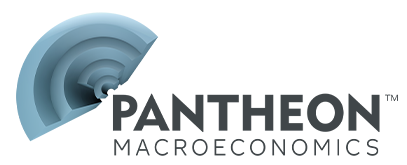- © 2025 Pantheon Macroeconomics
- Tel: +1 914 610 3830
Pantheon Macroeconomics
Best viewed on a device with a bigger screen...
Below is a list of our Eurozone Publications for the last 5 months. If you are looking for reports older than 5 months please email info@pantheonmacro.com, or contact your account rep
Please use the filters on the right to search for a specific date or topic.
Chartbook Datanotes Weekly Monitor
In one line: Too hot for a December cut, but dovish data in food and core goods.
In one line: Upside risk to German core inflation.
In one line: Downside risk to EZ core inflation, relative to our forecast.
In one line: Plateauing after strong growth earlier in the year.
In one line: Decent headline, but mixed details.
LITTLE IN THE DATA TO SUPPORT AN INSURANCE RATE CUT...
In one line: Stabilising, but downside risks loom.
In one line: Stung by falling consumption and another hit from falling net trade.
In one line: Private sector activity growth slows but Q4 still set to be better than Q3.
In one line: Solid headlines in services; weakness coming in industrial output.
In one line: Stable in November; spending should pick up regardless.
In one line: Inflation to stay above 2% in Q4.
In one line: Sticky, and will remain so until January.
In one line: A minor dip; investor sentiment still signals a solid PMI.
In one line: Exports to the US rebounding; deficit with China widening.

independent macro research, Eurozone Document Vault, Pantheon Macro, Pantheon Macroeconomics, independent research, ian shepherdson, economic intelligence,